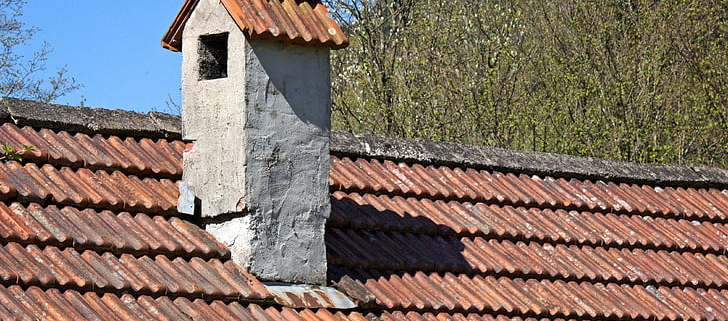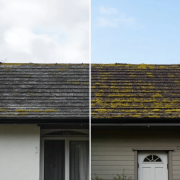Top 8 Signs of a Bad Roofing Job and How to Spot Them Early
Signs of a Bad Roofing Job: Key Takeaways
- Misaligned shingles can signal poor workmanship
- Missing drip edges leave your home vulnerable to moisture
- Ventilation issues shorten roof life and increase energy bills
- Faulty flashing and underlayment are major leak risks
- A sagging roofline may indicate structural failure
These key takeaways are obvious indicators of a bad roofing job, helping you quickly spot clear signs of poor workmanship.
Your roof is your home’s first line of defense, especially in Iowa’s extreme weather. But what if that new roof you just invested in wasn’t installed properly? Poor workmanship can lead to major issues, often before you even realize something’s wrong. Here are eight clear signs your roof may not have been installed correctly—and what to do about it.
Introduction: Why Roofing Quality Matters
A bad roofing job can have serious consequences for your home, leading to expensive repairs and even compromising your home’s structural integrity. When a roofing contractor cuts corners or delivers poor workmanship, the results can be devastating—think sagging rooflines, misaligned shingles, and water leaks that threaten the safety and comfort of your living space. Recognizing the signs of a bad roofing job early on is crucial to preventing further damage and protecting your investment. A properly installed roof not only shields your home from the elements but also ensures long-term durability and peace of mind. That’s why it’s essential to work with a reputable roofing contractor who stands behind their work and addresses any issues promptly. By staying alert to the common signs of a bad roofing job, such as uneven shingles or visible dips in the roof, you can take action before minor issues turn into major headaches.
1. Misaligned or Uneven Shingles
Wavy lines or inconsistent shingle patterns are more than just an eyesore—they’re a signal something went wrong during installation, such as misaligned shingle placement. Crooked or uneven shingles can lead to water infiltration and reduced shingle lifespan.
Misaligned shingle placement is often an obvious sign of improper installation or lazy workmanship. Wrong nailing technique is a common cause of misaligned shingles. In contrast, properly installed shingles are evenly aligned and securely fastened, ensuring the roof’s shingles provide maximum protection for your home. Misalignment can compromise the roof’s shingles’ ability to protect the home from the elements.
Related Resource: Roof Replacement in Iowa for quality craftsmanship that lasts.
2. Missing Drip Edge
No metal flashing along the roof edges? That’s a problem. The drip edge helps direct water away from your fascia and into the gutters. Without it, you risk moisture intrusion, fascia board rot, and foundation issues.
3. Poor Roof Ventilation
Hot attic in the summer or excessive moisture in winter? Poor or missing ventilation can cause trapped hot air to accumulate in the attic, which damages roofing materials and leads to shingle deterioration. Trapped cold air can result in condensation and swelling of the roof decking. Inadequate ventilation also forces cooling systems to work harder, increasing your energy bills. These issues can significantly shorten your roof’s lifespan. A quality roofing job includes a well-balanced attic ventilation system.
Read More: Why Proper Roof and Attic Ventilation Matters
4. Improper Nailing
Nails placed too high, overdriven, or underdriven are often the result of improper installation. Using the wrong nailing technique can lead to leaks, water damage, and even nail corrosion. These issues compromise your roof’s integrity and often lead to shingles flying off in high winds—a common problem across Iowa during severe storms.
Need an Inspection? Schedule a FREE Roofing Inspection with Waddle Exteriors.
5. Lack of Flashing in Key Areas
No flashing around chimneys, valleys, or vents? That’s a huge red flag. Flashing prevents water from seeping into your home at junction points. Missing, reused old flashing, or poorly installed flashing increases the risk of roof leaks and internal water damage, leading to costly repairs. Experienced contractors always use new materials for flashing to ensure proper waterproofing and prevent roof leaks.
6. Sagging Rooflines
Notice dips or waves along your roof? This could be a sign of a sagging roof, which often results from problems with the roof decking or the wooden foundation beneath your roofing materials. Sagging roofs are especially common when replacing an old roof, as years of wear can lead to rotten decking or compromised decking. It is crucial to inspect and replace any rotten or compromised decking to restore the structural integrity of the roof. Roofs with rotten or compromised decking are at risk of further structural problems if these issues are not addressed. Sagging can compromise structural integrity and often requires major corrections.
7. Inconsistent or Missing Underlayment
A properly installed roof has a uniform underlayment. Underlayment is a critical part of the roofing system, providing an extra layer of protection against water infiltration and ice damage. If you spot areas where the underlayment is exposed or missing altogether, your roof is vulnerable to these issues. A new roof installation should always include a properly installed underlayment to ensure the durability and effectiveness of the entire roofing system.
Knowledge is Power: Everything You Wanted to Know About Roofing
8. Stains, Leaks, or Mold Soon After Installation
Seeing leaks or ceiling stains just months after a new roof? These are obvious indicators and an obvious sign of a bad roof job or bad job by the contractor. Experiencing such issues with your current roof so soon after installation is incredibly frustrating for homeowners. Persistent leaks, stains, or mold may mean your current roof is a bad roof, and a brand new roof could be necessary to prevent further damage.
Mold or mildew in the attic also points to inadequate sealing, ventilation, or flashing.
Roof Installation Best Practices
To avoid the headaches and costs associated with a bad roofing job, it’s important to follow industry best practices during the installation process. Start by choosing a reputable roofing contractor or roofing company with a proven track record and positive reviews. High-quality roofing materials are a must, as they form the foundation of a properly installed roof that can withstand the elements for years. During installation, the roof deck should be solid and free of gaps, ensuring a stable base for the shingles. Shingles should be installed with a uniform appearance, evenly spaced, and securely fastened to prevent future issues. A reputable roofing company will also provide a workmanship warranty, giving you added protection against poor workmanship and installation errors. By insisting on these best practices, you can avoid a bad roofing job and enjoy a roof that not only looks great but also stands the test of time.
Avoiding a Bad Roofing Contractor
Choosing the right roofing contractor is one of the most important steps in ensuring a properly installed roof. Start by researching potential contractors—look for a reputable roofing contractor with strong references, positive online reviews, and a solid reputation in your community. Always verify that your contractor is licensed, insured, and certified to perform roofing jobs in your area. Ask for a free estimate and make sure you receive a detailed contract that outlines the scope of work, materials to be used, and the timeline for completion. Be cautious of any contractor who asks for full payment upfront or uses aggressive sales tactics. Resources like the Better Business Bureau and your state’s licensing board can help you verify credentials and avoid a bad roofing contractor. By taking these steps, you can avoid a bad roofing experience and ensure your new roof is installed to the highest standards.
Roof Repair and Maintenance Tips
Regular roof repair and maintenance are key to extending your roof’s lifespan and preventing costly issues down the road. Inspect your roof at least twice a year, looking for damaged shingles, sagging rooflines, or signs of leaks. Make sure your roof is properly ventilated to prevent moisture buildup and mold growth, which can lead to further damage and expensive repairs. If you notice any problems, contact a reputable roofing contractor right away for a professional assessment and timely roof repair. Keeping up with routine maintenance not only helps you save money but also ensures your roof remains strong and reliable for years to come. By staying proactive, you can avoid the pitfalls of a bad roofing job and protect your home from future damage.
Final Thoughts: What to Do If You Suspect a Bad Roofing Job
If your Iowa roof is showing any of these signs, don’t wait. The roofing industry is known for varying levels of craftsmanship, so it’s crucial to work with a reputable company and experienced roofing contractors to avoid the risks of a poor roofing job. Before having your roof replaced, document the condition of the roof prior to installation, as this can help if you need to file a claim or resolve disputes later. Homeowners insurance may cover damage caused by a poor roofing job, especially if the roof was recently replaced, but always check if your policy will cover damage and keep thorough records. Consider hiring a third party inspector to document any issues, which can be valuable if you need to negotiate or pursue legal action. If problems arise, small claims court is an accessible option for resolving disputes with roofing contractors. Waddle Exteriors proudly serves homeowners across Iowa and eastern Nebraska with expert inspections, repairs, and replacements.
Protect your investment. Call (877) 733-6400 or request a free in-home consultation today.
Frequently Asked Questions (FAQs)
Q: How soon should I inspect a new roof for problems?
A: Ideally, within the first few weeks—especially after a storm. Look for leaks, lifted or missing shingles, damage to your roof’s shingles, and attic moisture.
Q: Can poor installation void my roof warranty?
A: Yes. Many manufacturer warranties require proper installation by certified professionals. Poor workmanship may void coverage, and can lead to roof leaks or compromise your roof’s integrity.
Q: What should I do if I notice signs of a bad roofing job?
A: Contact a certified roofing contractor for an inspection. Document the issues, and consult your warranty and contract.
Q: Is it possible to fix a bad roofing job without full replacement?
A: Sometimes, yes. Depending on the issue, targeted repairs may resolve the problem. A professional assessment will determine the best course.
Q: How can I avoid a bad roofing job in the future?
A: Hire certified, locally trusted contractors like Waddle Exteriors. Check reviews, verify licensing, and ask about warranties and processes.






